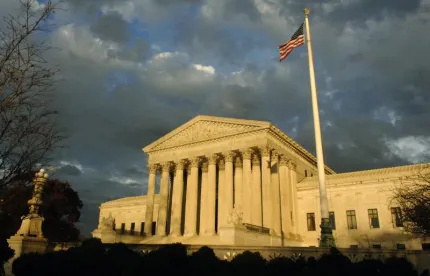A recent Supreme Court decision, Perez v. Mortgage Bankers Ass’n, highlights two important points about the authority of the U.S. Department of Labor, IRS, and other administrative agencies to interpret rules:
-
U.S. courts will generally follow administrative interpretations of statutes and an agency’s regulations, except in rare circumstances. This deference extends to “sub-regulatory” guidance, like opinion letters, rulings, notices, amicus briefs, and probably even FAQs posted on a website; and
-
Agencies have wide latitude to change their minds on interpretive guidance, without any obligation to consult with the public.
The decision illustrates the practical importance of getting involved in the regulatory process, and advocating for important clarifications before regulations are finalized. Although agencies may change interpretive guidance unilaterally, unambiguous regulations generally cannot be changed without advance notice and an opportunity to comment.
Background. This case involved whether mortgage-loan officers are eligible for overtime under the Fair Labor Standards Act. In 1999 and 2001, the U.S. Department of Labor issued opinion letters that said mortgage-loan officers were eligible for overtime. In 2004, the Department issued a formal regulation on the overtime requirements; the regulation was subject to a formal notice and comment process. After the 2004 regulation was finalized, the Department issued a 2006 opinion letter (at the request of the Mortgage Bankers Association) that said mortgage-loan officers were exempt from (i.e., not eligible for) overtime. This opinion interpreted the 2004 regulation.
Without notice or any opportunity to comment, the Department issued a new opinion letter in 2010–withdrawing the 2006 opinion, and stating that mortgage-loan officers were not exempt from overtime. The Mortgage Bankers Association cried foul and filed suit to hold DOL to its 2006 guidance.
Although the case involved a discrete issue under the Fair Labor Standards Act, the same issue can come up in the employee benefits context. Employers and other stakeholders routinely rely on “sub-regulatory” guidance like notices and FAQs that interpret statutes and regulations. For example, the Departments of Labor, Treasury, and Health and Human Services have issued 23 sets of FAQs interpreting provisions of the Affordable Care Act.
Supreme Court’s Holding. The Court unanimously upheld the Department of Labor’s 2010 opinion. In short, the Court said “easy come, easy go.” Just as the Department’s 2006 opinion was not subject to notice and comment, the Department was free to reverse course without notice or an opportunity for stakeholders to comment. A history of flip-flopping (with one interpretation during the last two Democratic administrations and a different interpretation during the last Republican administration) was not relevant.
The Court explained that there are two types of agency guidance: legislative regulations and interpretations. Under the Administrative Procedure Act, legislative regulations require advance notice and an opportunity to comment, but interpretations are not subject to notice and comment.
DOL’s 2004 regulation was a legislative regulation. Provisions of that regulation therefore generally cannot be changed without advance notice and an opportunity to comment. But DOL’s interpretation of its 2004 regulation was on the interpretive side of the line. (Despite the protest from the Mortgage Bankers Association, this characterization was taken on faith and was not before the Court.) The Department was therefore free to change its interpretation unilaterally; and the Court unanimously deferred to the Department’s new interpretation.
The Rub. This case caught our attention because it illustrates the importance of participating in the regulatory process. The case probably would have come out differently if the interpretation backed by the Mortgage Bankers Association had been reflected in the 2004 regulation, rather than a 2006 interpretation.
When agencies issue proposed regulations, they are obligated in most cases to consider and respond to significant comments. Final regulations often include changes and clarifications that address stakeholders’ concerns. Rules reflected in a final regulation carry the force of law and generally may not be changed without advance notice and an opportunity to comment. The recent history of the Department of Labor’s proposed new definition of “fiduciary” (also called the “conflict of interest” rule) illustrates how difficult it can be for an agency to change an unambiguous regulation.
In contrast, agencies are not bound in the same way to their interpretations and clarifications of ambiguous provisions in their regulations. In the case of mortgage-loan officers, the Department of Labor used this leeway to change its mind twice without seeking input from stakeholders: first in 2006, when the Department issued an advisory opinion that said mortgage-loan officers were exempt from overtime requirements (notwithstanding the 1999 and 2001 opinions); and a second time in 2010, when the Department reversed course. Under the Court’s deferential standard of review, either interpretation would have effectively controlled.
Within this framework, there is a clear benefit to raising concerns early–and getting them addressed in final regulations.



 />i
/>i

